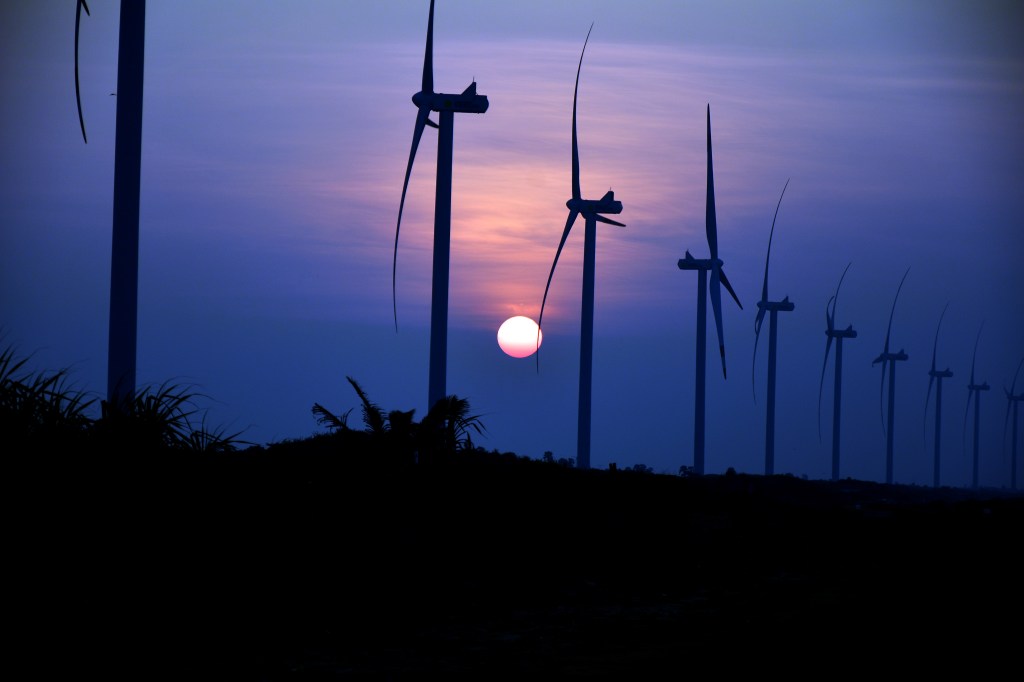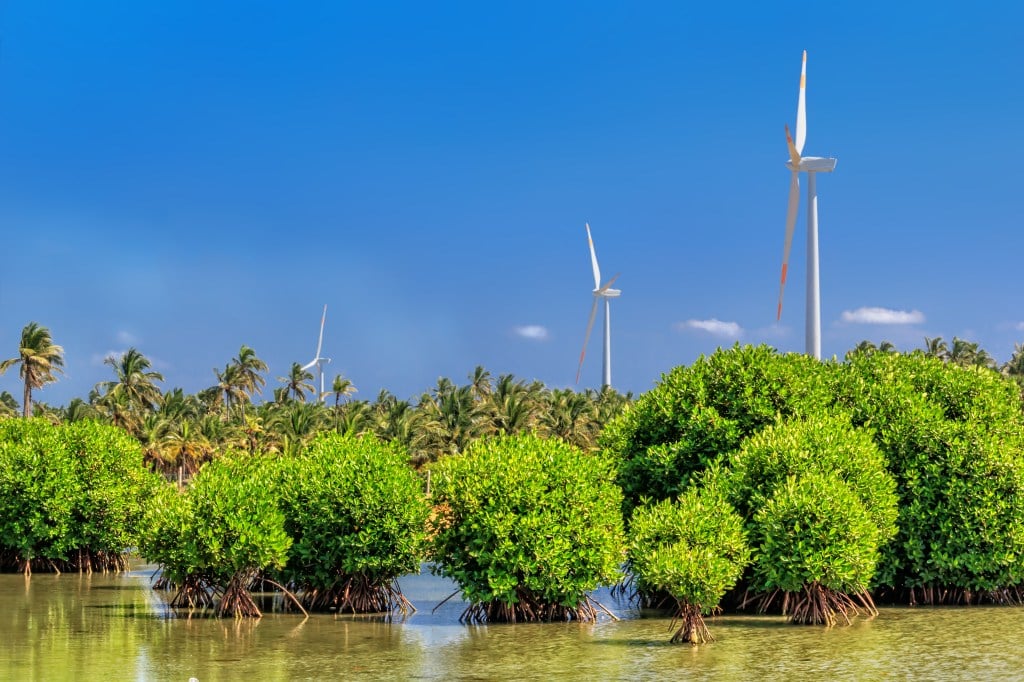Concessional Financing Crucial for Energy Transition in Developing Nations
How access to capital on favorable terms can accelerate the energy transition in low- and middle-income countries like Sri Lanka.

By Chanaka Wickramasuriya, Chief of Party, USAID Sri Lanka Energy Program, Chemonics International
Developing nations like Sri Lanka face significant challenges when it comes to the energy transition. On one hand, these nations (excluding China) only account for approximately 25% of global electricity generation and appear unlikely to meet the growing demand of their populations for electricity. While electricity consumption in these countries has only been growing at an average of 3% per year over the last five years, projected population and economic growth, higher electricity intensity of economic activities, and the transition to e-mobility means that electricity demand is expected to grow by approximately 6% per annum over the next 25 years.
On the other hand, most of these developing nations have access to considerable renewable energy resources in the form of wind, solar, and hydropower, offering both a level of energy security and significant potential for export revenue while promoting the decarbonization of their economies. A greater shift to such renewable resources will also reduce the risk of a decline in market access for the goods and services exported from these nations on account of emerging carbon border tariffs, largely being implemented across the developed world. Developing these renewable resources would lead to further economic resilience, independence, and reduced vulnerability to fossil fuel geo-politics and carbon lock-in, giving these nations greater economic and political freedom at a global level.

The single biggest stumbling block developing nations face to effect energy transition remains a lack of affordable capital and domestic financing capabilities. Compounding this is the lack of technical capacity and suitable infrastructure to integrate renewable energy onto the grid given its intermittencies and variability.
Assuming only 10% of the International Renewable Energy Agency’s (IREANA) annual investment requirement of approximately $5 trillion into energy transition (to meet the 1.5 degrees scenario) is required for developing nations, this would yet amount to approximately $500 billion per annum (estimated based on IREANA estimates for global energy transition). Developing nations have been receiving only around 15% of the annual $500 billion of worldwide investments into renewables, indicating not just the global shortfall, but a significant under-investment in the developing world. The total collective foreign exchange reserves of these developing nations currently amount to only approximately $3 trillion, indicating a significant gap in financing using only domestic financial resources.
Supporting the Enabling Environment
Preparing these nations for external and, largely, private sector-driven investment and financing first requires an enabling environment for investments in the sectors. This includes supporting policy, legal, governance, and regulatory architecture, and market and grid management structures. Donor supported technical assistance and capacity building, based on lessons learned in both developed and developing nations to create the necessary sector structures, and their timing and evolution, is imperative.
Engaging development agencies. Multilateral finance agencies and bilateral donors have a critical role to play in providing support for the development of legislative, procurement and regulatory framework, access to data resources and technologies, and human and technical capacity building to achieve this transition. Credibility of this architecture and human capital can reduce the inherently high-risk premiums associated with most of these nations. Credit ratings for these nations range from BBB+ and lower and accompanying sovereign risk premiums can range from as low as 2% to as high as 20%. Ring fencing the electricity sector from political expediency and/or solvency risks can significantly improve the off-taker risk profile. On the back of this more credible architecture, multilateral agencies can be encouraged to provide risk mitigation tools and partial credit guarantees to further improve these risk premiums.
Creating concessional financing mechanisms. The next most important provision is concessional long term financing mechanisms. This is not only to further reduce the blended cost of this financing for these nations but also provide an adequate pool of available financing to attract multiple bidders into a sector, that clearly will have to be developed and driven by private sector investment.
All these mechanisms have the knock-on positive effect of reducing tariffs to the consumer, creating a virtuous cycle of giving the energy transition a political impetus, and mitigating the pressures to maintain or increase fossil fuel led generation. By way of opening the sector to a greater number of private sector participation and players, this also leads to reducing the bureaucratic skepticism and political myopia towards competitive procurement, and avoiding state, elite, or regulatory capture of the energy sector in these nations.
The Case of Sri Lanka
Approximately 40-50% (depending on weather) of Sri Lanka’s annual electricity generation of around 15,000GWhr (on a 5GW grid capacity) is from renewable resources and is predominantly hydropower. Most of the remainder is roughly an equal mix of coal and furnace oil, the inputs for which are imported. Sri Lanka’s refinery capacity traditionally used Iranian light crude, and global economic sanctions placed on Iran created a significant added burden on the nation’s energy import bill, as did a subsequent financial crisis and accompanying lack of foreign exchange. However, the nation possesses significant potential in ground and floating solar, as well as on shore and offshore wind resources (up to 50GW) – far more than its own current and forecast needs. Interconnection, by way of cross border transmission lines, to neighboring India could unlock the export of energy and green hydrogen potential of these resources.
Sri Lanka’s total foreign exchange reserves currently stand at around $4.5 billion. Of these, usable, non-recourse reserves amount to only approximately $3 billion. Meeting the nation’s stated policy target of achieving 70% of electricity generation by renewables by 2030 will require an estimated $11 billion. Given the nation’s existing and forecast current account deficit, and the need for foreign exchange for general economic activities, meeting the financing needs for the energy transition will have to be based entirely on incremental external financing.
The passage of a new Electricity Act in Sri Lanka in July 2024 lays down a modern, competition- and private sector-driven architecture for the sector and removes historical risks of default by legislating regulatory requirements for sector solvency and removing mechanisms for political interference in tariff settings. Several multilateral and bilateral donors are contributing towards the necessary capacity building across the operational and regulatory landscape. Emerging from a sovereign default however, even though now under the aegis of an International Monetary Fund program, Sri Lanka’s sovereign risk premiums remain high at around 13%, and access to finance is still limited. Domestic fiscal flexibility and foreign exchange reserves are virtually non-existent for energy sector investments. Therefore, the single biggest risk pertaining to its planned energy transition lies in its ability to attract an adequate number of external private sector investors and debt providers.
This situation is not unique to Sri Lanka. With the added pressure of developing nations being asked to decarbonize their economies in support of climate change and their commitments under UNFCCC Paris Accords, conservatively, it’s estimated, based on IREANA estimates for global energy transition, that at least $500 billion of annual investments in clean energy generation and infrastructure in these nations is required. Developing nations will require massive financial assistance if they are to meet these challenging goals, and they need it soon.
The availability of a pool of funds, blended by concessional financing, which can be made available to and utilized to supplement competitively procured private sector investors will be the key catalyst toward making its energy transition a success.
